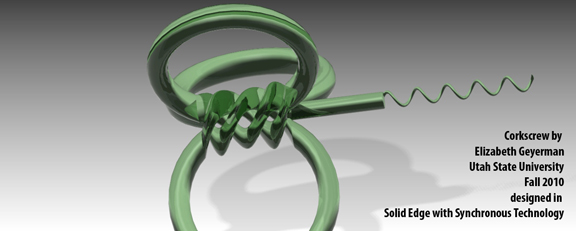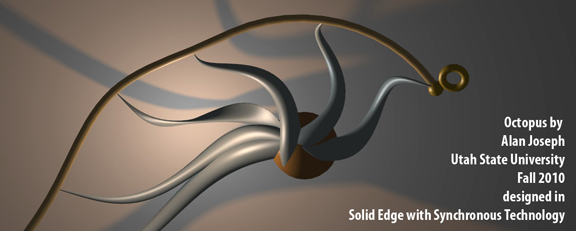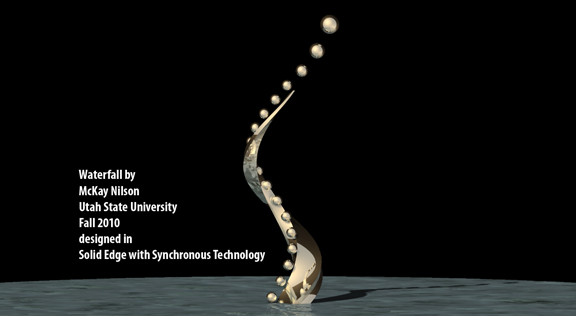December 15, 2010



A symptom of an uninspired working life: You begin to think inside the box. In design and engineering, if you’ve been repeatedly told to risk as little as possible, to always conform to a set of aesthetic standards, and to reuse as many preexisting components as possible, sooner or later you’ll lose your creative edge (most likely, sooner).
Many of us think of mechanical CAD packages as tools for designing devices with electromechanical functions. When we begin a project, we already have in mind a rough idea of the standard components we’ll be using. We draw inspiration from existing objects, from last season’s bestsellers. Naturally, we end up designing variations of the same.
That’s why my encounter with the students from professor John Devitry’s class (Utah State University, Mechanical and Aerospace Engineering) served as a reminder that we should all strive to hold on to the spirit of experimentation. Devitry didn’t bother telling his students what they couldn’t do with a mechanical CAD program. Consequently, his students turned out designs that many of us wouldn’t even think of attempting in such software.
The work featured in this blog post and video report come from Elizabeth Geyerman, Alan Joseph, and McKay Nilson, all from Devitry’s CAD class. They used Solid Edge with Synchronous Technology, but their designs could easily fool untrained eyes into thinking they come from 3ds Max, Maya, and Rhino—programs better suited than mechanical CAD for form exploration.
In my interviews with them, I learned something I’d nearly forgotten: You gotta have art.
“Well, art is a big part of engineering,” said Geyerman. “I mean, if something doesn’t have aesthetic appeal, no one is going to want to use it or buy it. When I started learning this program [Solid Edge with Synchronous Technology] I thought not only is it practical, it could also be a medium of art.”
If you’re suffering from idea block (the designer’s equivalent of writer’s block), Joseph suggested, “Go to an art museum ... try and feel the creativity, doodle ... Yes, you can make this assembly or this faucet works, then you can take the outside of that and maybe give it a sort of sculptural look. It’s not just a faucet—it’s a piece of modern art.”
Professor John Devitry is an Adjunct Faculty of Mechanical and Aerospace Engineering at Utah State University. He’s the CAD administrator at the Space Dynamics Lab. Previously, he worked for UGS PLM Solutions (now known as Siemens PLM Software) as the Western U.S. Regional Lead Application Engineer.
For more, watch the video report below:
Subscribe to our FREE magazine, FREE email newsletters or both!
About the Author
Kenneth Wong is Digital Engineering’s resident blogger and senior editor. Email him at [email protected] or share your thoughts on this article at digitaleng.news/facebook.
Follow DERelated Topics






